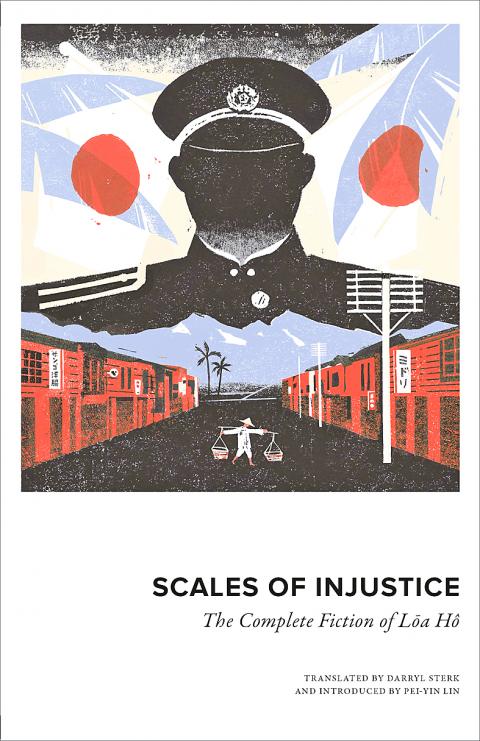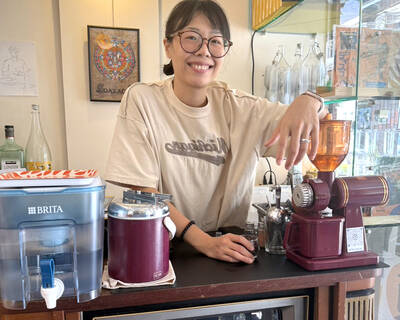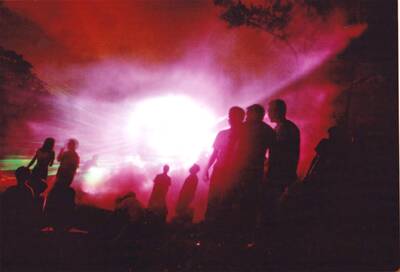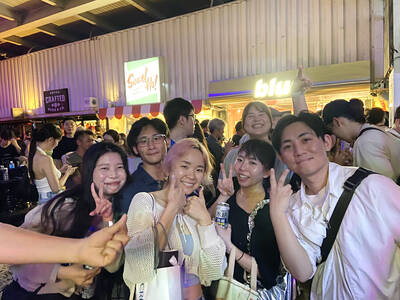Honford Star is a new independent publisher, based in London and specializing in translations from East Asia. One of their first publications is a complete edition of the short stories of Loa Ho (賴河, 1894-1943), seen by many as the father of Taiwanese literature written in the vernacular.
Loa, also known as Lai He (賴和), wrote during the era of Japanese occupation. Born in Changhua County, he trained and practiced as a doctor, writing fiction only for a period of 12 years in the middle of his life. He was imprisoned twice, albeit for short periods, as a suspected opponent of the Japanese (the second time on the day of the attack on Pearl Harbor). He is consequently seen as both the father of Taiwanese writing in the vernacular and as a chronicler of Taiwan’s colonial era, with a special sympathy for the oppressed.
Darryl Sterk, the distinguished translator, explains in a note that he has felt free to expand the text where he felt a historical explanation was necessary, saying that the author appears to have often disguised his exact meaning in order to get his work past the censor.

Taiwanese Steinbeck
Loa may sound like a Taiwanese Chekhov, being both a doctor and a writer, but the tales themselves read more like Steinbeck. Here are stories of the plight of the ultra-poor, unable to buy presents for their children for the Lunar New Year because of fraudulent inspectors at the market where they work, and of growers of sugar cane defrauded by the company they work for, with its tampered-with scales and last-minute new regulations. In Steinbeck the response of the workers is usually political action, strikes and so forth. Here, the opposition to exploitation is confined to several stories put together in a special section, and is not especially effective.
The notes in this edition are hugely informative. Because, for instance, the subject-matter is so often people’s economic status, money looms large in these stories. So in a key note the translator explains how both the older Chinese terminology — k’uai (silver pieces) and kho (rounds) – and the newer Japanese terminology — yen — were used.
And in a story concerned with the trade in opium, By Chess and Go Boards, characters debate their attitudes to new licensing laws. After an initial attempt to stamp out opium use, we’re told, the Japanese adopted a system of licenses for both addicts and retailers. The term “roasting crows” was used to mean consuming the product because of a similarity of the characters in Chinese. The sale of opium wasn’t made illegal until the end of Japanese rule in 1945.
Some of these stories appear to have been written in response to changes in social conditions, so that a new law, for example, immediately becomes the topic of a Loa tale. Historians will thus value this collection as, in part, a running commentary on life in Taiwan in the 1920s and 1930s, the decades in which most of the stories were written.
Where an author is mentioned at all, Loa uses a pseudonym. Darryl Sterk renders these with some English equivalents — Lazy Cloud (the most common), Doc, Ash and so on. In addition, most of the stories have a date of publication appended, plus the name of the journal where the story first appeared, though for a significant number it’s stated that no date of composition is known.
Sterk says he found it impossible not to warm to Loa and his stories, and I have to agree. They also display a considerable range, moving from a conversation overheard in a train (Going to a Meeting), via a child taken into police custody on the Lunar New Year (A Disappointing New Year) and a cane sugar grower who refuses to complain when he’s denied a bonus (Bumper Crop), to a policemen — “patrolman” — killed by an exploited vegetable seller (A Lever Scale).
Hong Kong University’s Lin Pei-yin (林姵吟), author of Colonial Taiwan: Negotiating Identities and Modernity Through Literature (2017), supplies an informative introduction. In it she points to Loa’s criticisms of traditional Taiwanese attitudes, as well as providing useful insights into the politics of the Taiwan Cultural Association (it divided into left and right factions) during the Japanese era. She compares Loa to China’s Lu Xun (魯迅), though Loa was far less productive, and gives several reasons why he should be better known than he is.
Another topic of interest is Loa’s treatment of medical issues, seeing that he was himself a doctor. The Japanese apparently favored and promoted Western medicine, and considered Chinese herbal remedies ineffective, issues dealt with in Mr Snake and Hope for the Future. Traditional remedies don’t get much sympathy in either story.
Colloquial Style
Darryl Sterk’s style in these translations is pleasantly colloquial. Examples from just one item, The Story of a Class Action (published 1934), include “at the drop of a hat,” “up in arms,” “a class act,” an “opium fix” and “an afternoon snooze.” This story, incidentally, has an unusually optimistic ending and features an idealistic main character, a Mr Grove, though its relationship to Loa’s attitude is less significant than it might be by the story being set, untypically, before the arrival of the Japanese in Taiwan.
A Lever Scale (published 1926) is one of the best items. In it close attention is paid to the multiple ways the police could catch out the poor. “There were your travel regulations, traffic controls, rules of the road, rules concerning food and drink, and rules relating to weights and measures — lift a finger and you might be breaking some rule”. Loa adds a note to this story saying that he witnessed it himself but that it took him some years to dare to set it down. He was finally persuaded by the example of Anatole France.
Honford Star is to be congratulated on this publication. Let’s hope many comparable volumes will soon follow.

Cheng Ching-hsiang (鄭青祥) turned a small triangle of concrete jammed between two old shops into a cool little bar called 9dimension. In front of the shop, a steampunk-like structure was welded by himself to serve as a booth where he prepares cocktails. “Yancheng used to be just old people,” he says, “but now young people are coming and creating the New Yancheng.” Around the corner, Yu Hsiu-jao (饒毓琇), opened Tiny Cafe. True to its name, it is the size of a cupboard and serves cold-brewed coffee. “Small shops are so special and have personality,” she says, “people come to Yancheng to find such treasures.” She

In July of 1995, a group of local DJs began posting an event flyer around Taipei. It was cheaply photocopied and nearly all in English, with a hand-drawn map on the back and, on the front, a big red hand print alongside one prominent line of text, “Finally… THE PARTY.” The map led to a remote floodplain in Taipei County (now New Taipei City) just across the Tamsui River from Taipei. The organizers got permission from no one. They just drove up in a blue Taiwanese pickup truck, set up a generator, two speakers, two turntables and a mixer. They

Former Chinese Nationalist Party (KMT) chairwoman Hung Hsiu-chu’s (洪秀柱) attendance at the Chinese Communist Party’s (CPP) “Chinese People’s War of Resistance Against Japanese Aggression and the World Anti-Fascist War” parade in Beijing is infuriating, embarrassing and insulting to nearly everyone in Taiwan, and Taiwan’s friends and allies. She is also ripping off bandages and pouring salt into old wounds. In the process she managed to tie both the KMT and the Democratic Progressive Party (DPP) into uncomfortable knots. The KMT continues to honor their heroic fighters, who defended China against the invading Japanese Empire, which inflicted unimaginable horrors on the

Hannah Liao (廖宸萱) recalls the harassment she experienced on dating apps, an experience that left her frightened and disgusted. “I’ve tried some voice-based dating apps,” the 30-year-old says. “Right away, some guys would say things like, ‘Wanna talk dirty?’ or ‘Wanna suck my d**k?’” she says. Liao’s story is not unique. Ministry of Health and Welfare statistics show a more than 50 percent rise in sexual assault cases related to online encounters over the past five years. In 2023 alone, women comprised 7,698 of the 9,413 reported victims. Faced with a dating landscape that can feel more predatory than promising, many in